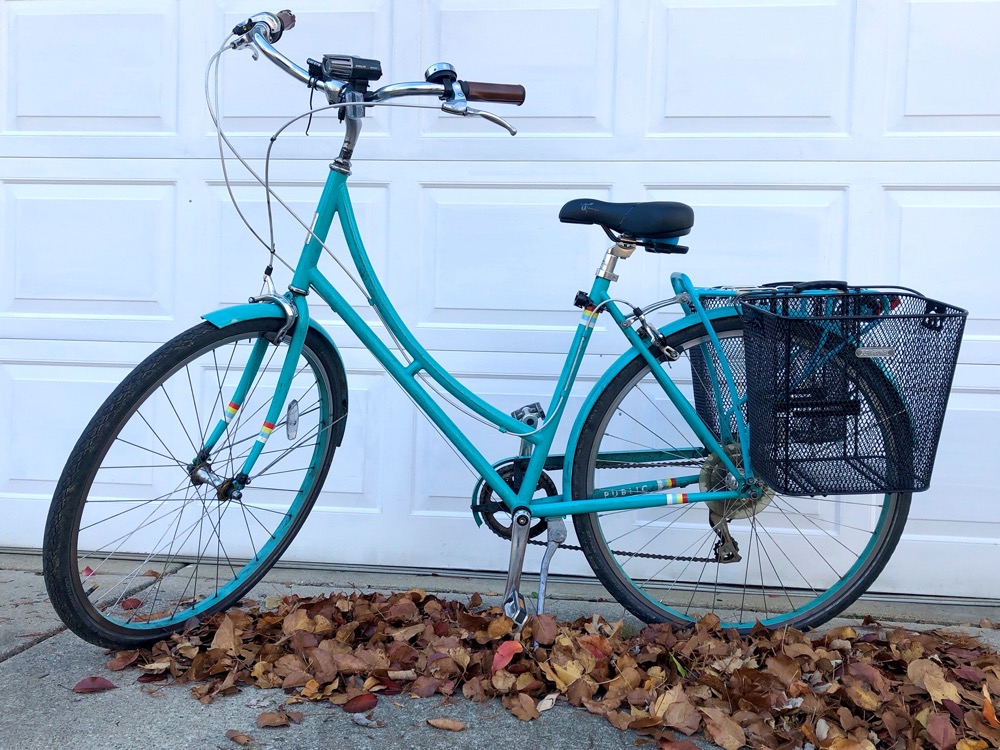Both Champaign and Urbana like to consider themselves bike friendly cities. In fact, the League of American Bicyclists rates Champaign as a Silver Level bike friendly city, and Urbana as Gold Level. This makes our cities sound like places where people of all ages can easily use bikes for transportation and recreation. I hate to say it, but I have not found this to be the case.
I’ve lived in Champaign since 2002, and I’ve done a lot of biking here. For much of the past 10 years, I’ve biked between 10 and 20 miles on most days when weather permits. I consider myself a skilled and experienced rider, but that doesn’t mean it’s safe for me. Six weeks ago, a driver ran into me while I was biking. I had the right of way, but they didn’t see me, and they forgot to use their turn signal. I tried to stop but didn’t have quite enough time, and I was slammed into the pavement, giving me a black eye, bruises and lacerations on my face and legs, and badly scratching my glasses. If I had reacted less quickly or if the driver had been going faster, things could have been a lot worse, and yet my accident wasn’t newsworthy, or even uncommon. It wasn’t even the first one the paramedics had responded to that day.
I was lucky. Drivers kill hundreds of cyclists each year, with a number of high profile incidents in just the last few months across Champaign County. It’s not surprising that many people don’t feel safe biking to work or to school. They probably believe it’s much less safe for their children or their parents or grandparents to bike, and they’d be right.
Everyone deserves the ability to choose safe active transportation options, not just those of us who are relatively healthy and have lots of biking experience. Walking and biking should be readily available whether you’re rich or poor. It should be safe for elderly people and young children to walk, bike, or use tricycles. We should have infrastructure that works for folks using canes or wheelchairs, and for people pushing strollers, or grocery carts. This isn’t just about safety; there are economic benefits as well. Safe bike lanes and sidewalks are actually better for business than roads.
Urbana residents can easily ride the Kickapoo Rail Trail to a restaurant in St. Joseph, which is doing great things for that business. But I’d like us to benefit our own local businesses, like our downtown cafes, restaurants, and shops. Right now, all our infrastructure seems designed to move people through our downtowns, instead of to our downtowns. Why wouldn’t we encourage people to take a pleasant ride for a few miles, and then stop for a snack and do some shopping? All these businesses will do better if it’s easy for folks to walk and bike to them, and that infrastructure encourages additional development, which will be a welcome boost to our tax base.
During the pandemic, cities all over the world have closed selected streets to make more space for pedestrians and bike riders to use safely. Many of them are being made permanent because they’re so popular with residents and businesses alike. We’re an ideal community for this kind of setup! Our weather is mild for much of the year, and the terrain is so flat that it’s easy to ride.
All these changes sound expensive, but they don’t have to be. We can do this quickly and easily, partly by using temporary barriers and bollards to try out different ways of slowing and separating traffic, to see what works best in different places.
We’re a University community. We’re innovative and forward thinking. This is an essential part of our identity. Making both cities safer for active transportation for everyone helps our resiliency for the future. Employers value walkable and bikeable communities, because that’s what the employees they’re trying to recruit are looking for. The Champaign-Urbana community is often said to be a great place to raise kids. Let’s build on that, making it a great place to live through all stages of life. Make it easy to stay active and healthy. Invest in our community to encourage our grown children to want to stay and build with us.
Some specific actions to consider:
- Separate bike lanes from traffic with real barriers, not just painted lines on the pavement
- Create entirely separate bike trails that people can use to get to jobs, libraries, parks, and restaurants
- Lower speed limits
- Implement traffic calming measures
- Close some streets to all but local traffic
- Automatic walk lights instead of buttons (I often have to dismount and awkwardly walk my bike up on the sidewalk to push the button and get the signal to change.)
- Eliminate one-way streets








